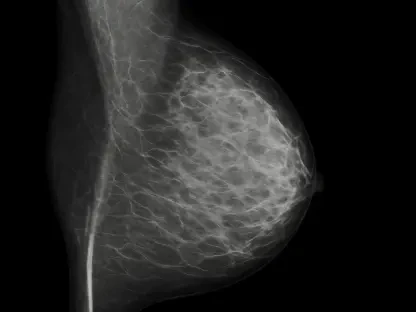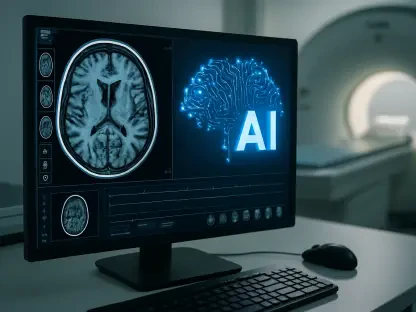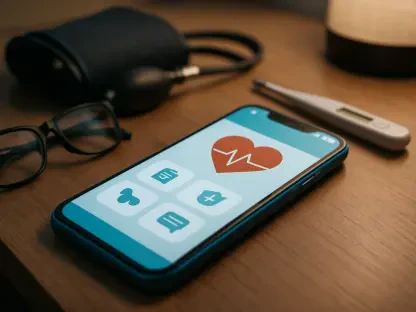In an era where technology permeates every aspect of life, the healthcare sector stands at the forefront of a remarkable transformation driven by cutting-edge hardware innovations, redefining medical care delivery. As the world navigates the complexities of an aging population and rising chronic conditions, advanced devices and systems are stepping in to revolutionize how care is experienced. From smart wearables that monitor vital signs in real-time to robotic tools enhancing surgical precision, the integration of technology is not just a trend but a fundamental shift toward more personalized and efficient patient care. This exploration delves into the pivotal advancements shaping hospitals, clinics, and even personal health management, highlighting the seamless blend of hardware and healthcare. It’s a journey into a landscape where data connectivity and intelligent systems promise to elevate outcomes, streamline operations, and empower individuals like never before, setting a new standard for what’s possible in medical practice.
Connectivity at the Core: IoT’s Impact on Healthcare
The Internet of Things (IoT) has emerged as a linchpin in modern healthcare, creating a network of interconnected devices that facilitate a continuous stream of critical data. With projections estimating the IoT healthcare market to surge from $56.73 billion in 2024 to an astounding $464.45 billion by 2034, the scale of its influence is clear. Medical equipment, which captured a significant 37.5% market share in recent data, exemplifies how IoT enables real-time monitoring and rapid response to patient needs. This technology ensures that vital information flows effortlessly between devices and healthcare providers, allowing for swift, informed decision-making. Hospitals now rely on these connected systems to track everything from patient vitals to equipment status, reducing delays and enhancing the quality of care. The profound impact of IoT lies in its ability to transform fragmented processes into a cohesive, responsive framework that prioritizes patient well-being.
Beyond the impressive market growth, IoT’s role in healthcare extends to fostering a proactive approach to medical challenges. By integrating sensors and smart systems into everyday medical tools, this technology empowers clinicians to anticipate issues before they escalate into emergencies. For instance, connected devices can alert staff to irregularities in a patient’s condition, enabling early interventions that save lives. Additionally, IoT streamlines administrative tasks by automating data collection and reducing manual errors, freeing up valuable time for patient interaction. The ripple effect of such connectivity touches every corner of healthcare delivery, from intensive care units to outpatient services, ensuring that resources are allocated efficiently. As this network of devices continues to expand, it lays the groundwork for a future where healthcare is not just reactive but anticipatory, driven by a deep integration of technology and human expertise.
Wearable Tech: Redefining Patient Empowerment
Wearable medical devices have transcended their origins as simple fitness trackers, evolving into sophisticated tools that play a central role in health monitoring with a 34% market share as of 2023. Forecasts suggest the global market for these devices will reach $27.8 billion by 2026, reflecting their growing importance amid rising health concerns. Equipped to track critical metrics like heart rate, blood pressure, and glucose levels, wearables provide patients with immediate access to their health data. Enhanced by artificial intelligence, these tools go beyond mere recording, offering predictive insights that can flag potential issues before they become serious. This shift empowers individuals to take charge of their wellness, fostering a culture of prevention over cure in personal health management.
The significance of wearable technology also lies in its ability to bridge the gap between patients and healthcare providers. By transmitting real-time data to medical professionals, these devices ensure that care is tailored to individual needs, even from a distance. This is particularly vital for managing chronic conditions, where consistent monitoring can prevent complications and reduce hospital visits. The aging demographic, increasingly reliant on such tools, benefits from the autonomy and peace of mind that wearables offer. Moreover, the integration of user-friendly interfaces makes this technology accessible to a wide audience, breaking down barriers to adoption. As wearables become more advanced, they promise to further revolutionize how health is perceived and managed, placing actionable insights directly into the hands of those who need them most.
Surgical Precision: Advances in Diagnostic and Operative Tools
The realm of surgical and diagnostic hardware is witnessing a profound evolution, driven by robotic systems and intelligent instruments that incorporate sensors and artificial intelligence. These innovations bring an unprecedented level of accuracy to operating rooms, minimizing invasiveness and significantly improving patient recovery times. High-definition imaging and real-time data during procedures allow surgeons to make precise decisions, reducing the likelihood of complications. Such advancements are not merely technological feats but represent a fundamental enhancement in the standard of care, ensuring that complex interventions are safer and more effective for patients across various medical disciplines.
Additionally, the impact of these advanced tools extends to diagnostics, where smart hardware accelerates the identification of conditions with remarkable clarity. By integrating AI-driven analytics, diagnostic equipment can process intricate data sets, such as medical imaging, to detect anomalies at earlier stages than traditional methods. This capability is transforming how diseases are approached, shifting the focus toward early intervention and better outcomes. Hospitals adopting these technologies report improved efficiency in surgical workflows, as well as heightened confidence among medical teams. As these tools continue to evolve, they are set to redefine the boundaries of medical precision, offering a glimpse into a future where errors are minimized, and patient safety is paramount in every procedure.
Operational Efficiency: RFID in Patient and Asset Tracking
Radio Frequency Identification (RFID) technology is reshaping healthcare operations by providing secure and efficient solutions for patient identification and resource management. Through RFID wristbands, hospitals can track patients in real-time, ensuring accurate medication administration and reducing identification errors. This system integrates seamlessly with hospital databases, enhancing safety protocols and improving the overall patient experience. The technology’s ability to prevent mix-ups and streamline processes marks a significant step forward in delivering reliable care, particularly in high-pressure environments where precision is critical.
Equally important is RFID’s application in asset and inventory management, which optimizes the allocation of medical equipment and supplies. By tracking the location and status of critical resources, healthcare facilities can avoid shortages and ensure that tools are available when needed most. This efficiency not only cuts operational costs but also minimizes delays in treatment, directly benefiting patient outcomes. The broader adoption of RFID reflects a growing recognition of its value in addressing logistical challenges, from emergency rooms to long-term care settings. As hospitals continue to embrace this technology, the focus on operational excellence becomes a cornerstone of modern healthcare delivery, balancing technological innovation with practical needs.
Smart Healthcare: AI’s Transformative Power in Hardware
Artificial Intelligence (AI) is redefining healthcare hardware by converting conventional devices into intelligent systems capable of learning and forecasting health outcomes. With the AI healthcare market projected to grow at a compound annual rate of 38.5% through 2030, its influence is set to expand rapidly. AI enhances diagnostic tools by analyzing complex data, such as medical images and lab results, with exceptional accuracy, often surpassing human capabilities in early disease detection. This integration marks a pivotal shift toward preventive care, where potential health issues are addressed before they manifest into serious conditions, ultimately improving patient prognosis.
The synergy between AI and advanced sensors in medical hardware further amplifies its impact, enabling faster and more comprehensive assessments. For example, AI-powered systems can provide real-time feedback during patient monitoring, alerting clinicians to subtle changes that might indicate emerging problems. This technology also supports personalized treatment plans by identifying patterns unique to each patient, ensuring tailored interventions. The growing reliance on AI reflects a broader trend toward data-driven healthcare, where decisions are grounded in precise, actionable insights. As these intelligent systems become more sophisticated, they promise to reshape the medical landscape, prioritizing prevention and customization in ways previously unimaginable.
Securing the Future: Addressing Cybersecurity Challenges
As healthcare hardware becomes increasingly interconnected, the specter of cybersecurity threats looms large, with a staggering 82% of organizations reporting attacks on their IoT devices. Protecting sensitive patient information in this digital ecosystem is a top priority, necessitating robust security frameworks and stringent protocols. The vulnerability of connected systems underscores the importance of safeguarding data integrity to maintain trust between providers and patients. Without adequate defenses, the very innovations designed to improve care could become liabilities, exposing critical information to unauthorized access and disrupting services.
Addressing these risks requires a multi-layered approach, combining advanced encryption, regular system updates, and comprehensive staff training to mitigate potential breaches. Healthcare institutions must also invest in monitoring tools to detect and respond to threats in real-time, ensuring that patient privacy remains uncompromised. Collaboration between technology developers and medical facilities is essential to create resilient systems that can withstand evolving cyber threats. As the reliance on digital solutions grows, striking a balance between innovation and security becomes a defining challenge, shaping how future advancements are implemented to protect both data and lives.
Reflecting on Progress: Lessons from a Tech-Driven Era
Looking back, the journey of healthcare hardware over recent years reveals a landscape dramatically altered by technological strides, from IoT connectivity to AI-driven diagnostics. Each innovation, whether in wearables or surgical tools, has played a crucial role in shifting the focus from reactive treatments to proactive health management. The integration of RFID has streamlined operations, while cybersecurity concerns have prompted a renewed emphasis on data protection. Moving forward, the emphasis should be on fostering collaborations between tech developers and healthcare providers to refine these tools further. Investing in scalable security measures and prioritizing patient-centric design in future hardware will ensure that technology continues to enhance care without compromising trust. As the industry builds on these advancements, the commitment to balancing innovation with safety must guide the next steps, paving the way for a healthier, more connected tomorrow.









